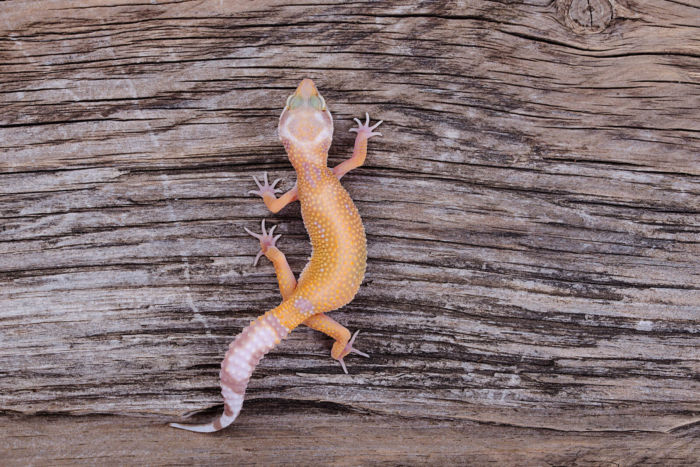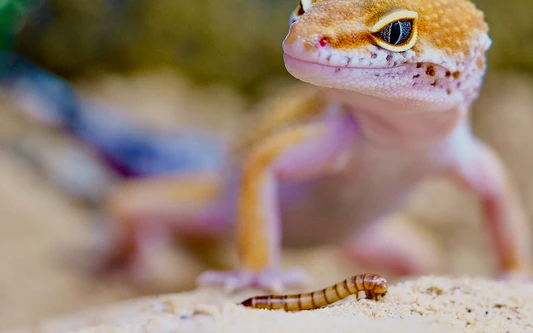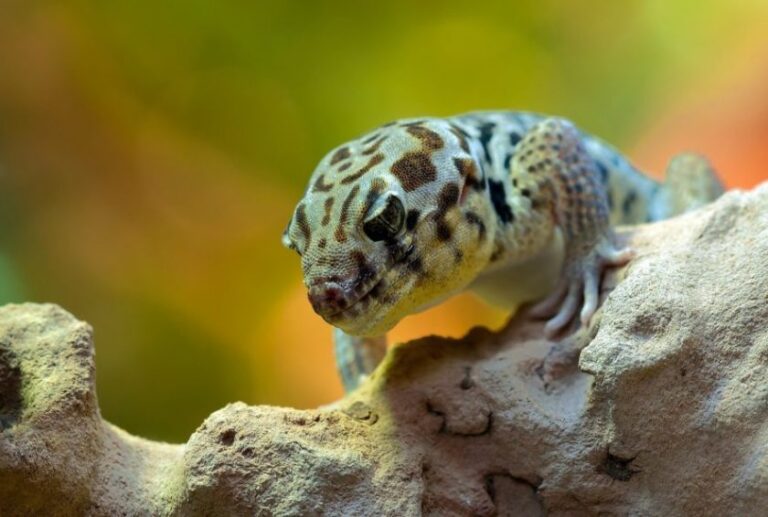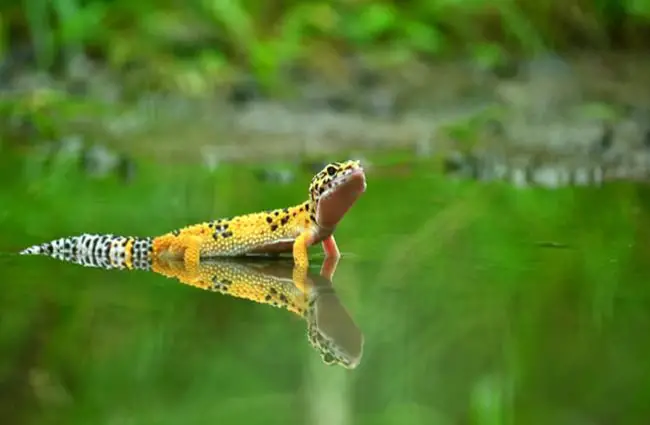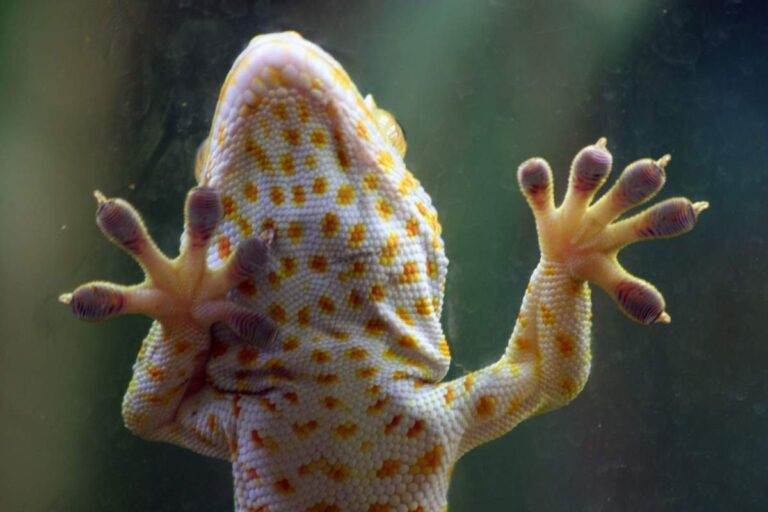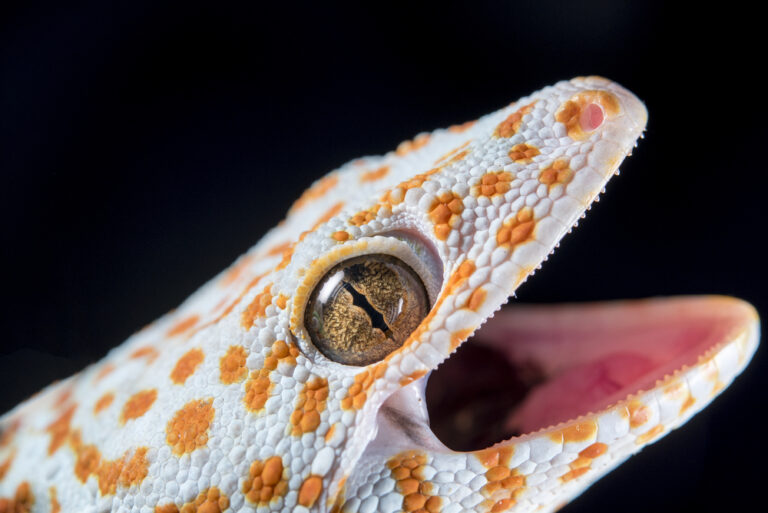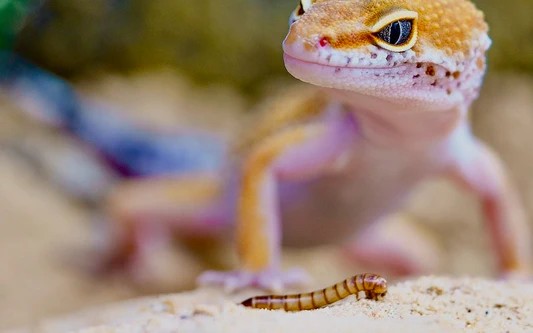Do Leopard Geckos Like To Climb? The Enigmatic World
I’m in my room, peering into a cozy enclosure where my leopard gecko resides. It’s nighttime, and the room is dimly lit. I notice something intriguing – my gecko, perched atop a rock, its small feet gripping the surface with surprising agility.
This got me thinking: is climbing something these geckos enjoy, or is it just a chance occurrence?
So, This answer is a little bit tricky, Leopard geckos are not great tree climbers, but their small, sharp claws are perfect for scaling small rocks and rocky terrain. Climbing rocks is a natural behavior for them, and it can be a fun and enriching activity for pets.
Let’s get rolling
Why Leopard Geckos Are Not Good Climbers
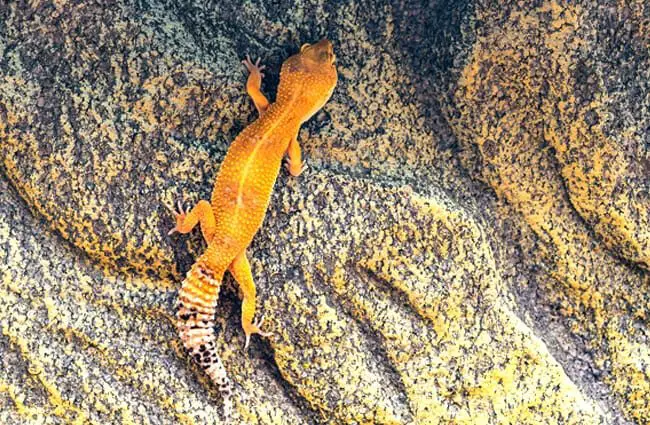
Leopard geckos belong to the Eublepharidae subfamily, which distinguishes them from other gecko subfamilies primarily through unique eye and toe features. In Eublepharidae, members possess moveable eyelids and clawed toes, setting them apart from their counterparts in the Gekkonidae family, who lack eyelids and have specialized toe pads called lamellae for climbing. This key difference allows them to blink and close their eyes, enhancing their visual adaptability.
The absence of these specialized toe pads inherently limits their climbing abilities. While they can ascend rocks and navigate sizable branches with agility, they typically exhibit terrestrial behavior, remaining close to the ground.
In addition, they may engage in some climbing activities, yet their natural inclination is to stay at lower elevations. This behavior aligns with their terrestrial nature, making them proficient ground-dwellers.
Reasons Gecko Is Climbing?
Exploration: These creatures have a natural curiosity, often ascending to explore their surroundings. They may investigate new surfaces, objects, or areas within their habitat.
Hunting: As insectivores, they may scale surfaces to gain a better vantage point for locating prey, such as insects or other small invertebrates.
Thermoregulation: Climbing assists in regulating their body temperature by allowing access to warmer or cooler areas as needed.
Escape: If they perceive threats or feel stressed, they may ascend to avoid danger. This could involve scaling walls or objects to elude predators or other members of their species.
Habitat Mimicry: In the wild, they often inhabit trees and elevated surfaces. Climbing in captivity can be instinctual, mimicking their natural environment.
Exercise: Climbing serves as a form of physical activity, helping to keep them healthy and active.
Social Interaction: In a communal setting, they might ascend to interact with others. Climbing can be a way to establish dominance or communicate.
Comfort: Some individuals may feel more secure when they are elevated, particularly arboreal species.
Escape from Unfavorable Conditions: Climbing can provide an escape from uncomfortable conditions, such as excessively hot or wet substrates.
Mating Behavior: During the breeding season, males might climb to reach females or establish territory.
Common Concerns During Gecko Climbing
Safety: The primary concern when they climb is ensuring their safety. Make certain that their enclosure is escape-proof, with secure lids or screens. Loose or unstable objects in the enclosure could pose a risk if they fall while climbing.
Fall Risk: These creatures can fall from heights, which can result in injuries or stress. Providing branches, rocks, or other climbing structures that are not too high can help reduce the risk of falls.
Heat and Light: When climbing, they may move closer to heat sources or lights. Ensure that they cannot come into direct contact with heat lamps or other heat sources, as this can cause burns.
Stress: Climbing can be a sign of stress. If they are constantly climbing or behaving unusually, it may be due to stressors in their environment, such as overcrowding or improper temperatures.
Inadequate Substrate: Ensure that the substrate in their enclosure provides good traction and support. Avoid substrates that are too slippery or abrasive, as these can lead to foot problems.
Overcrowding: In multi-creature enclosures, climbing may be a sign of territorial disputes or overcrowding. Ensure that there is enough space and hiding spots to minimize conflicts.
Lack of Enrichment: They climb for stimulation and exercise. Provide them with a variety of climbing structures and hiding places to keep them mentally and physically engaged.
Injuries: Regularly check for any injuries or signs of stress, such as dropped tails or changes in behavior, that may be related to climbing incidents.
Proper Handling: If you need to handle them while they’re climbing, do so gently and avoid excessive force or sudden movements to prevent injury or stress.
Supervision: when they are exploring outside of their enclosure, ensure that they are under close supervision to prevent accidents or escapes.
Enhancing Your Leopard Gecko’s Habitat with Climbing Structures
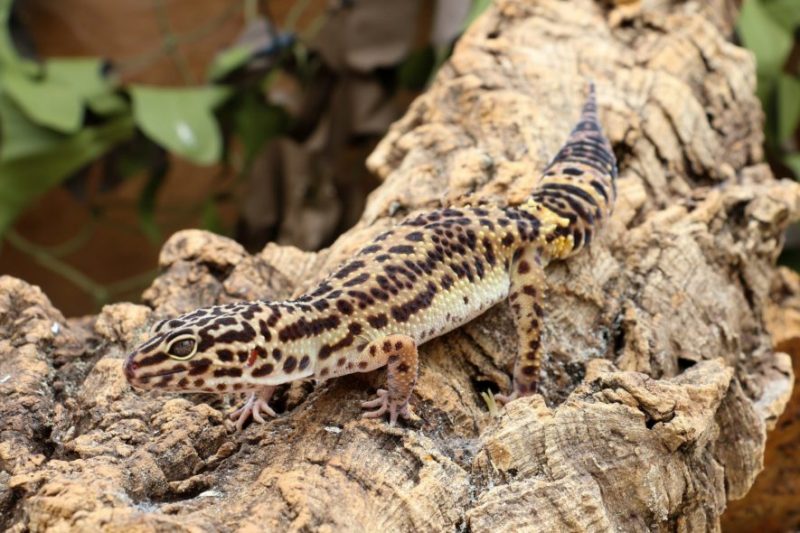
Leopard geckos do exhibit a certain degree of climbing behavior, and incorporating suitable climbing structures can greatly enrich their habitat. Adding rocks, sticks, small logs, and even intriguing objects like replica dinosaur skulls can provide your leopard gecko with opportunities for climbing, perching, playful exploration, and basking.
To introduce these elements effectively, it’s essential to follow a meticulous process. For instance, ensure that any sharp edges on rocks are smoothed to prevent potential harm to your reptile. Thoroughly cleaning rocks is imperative to eliminate all traces of dirt and bacteria.
When collecting rocks or logs from outdoor sources, be diligent in checking for the absence of bark and the presence of any wood-dwelling parasites. Consider baking these items in the oven after surface cleaning to eradicate any remaining parasites. A 20-30 minute bake at an appropriate temperature should suffice.
Sanitizing these additions to your gecko’s tank is of utmost importance. Begin by washing them with organic dish soap and drying them with paper towels. Then, you can choose between two effective sanitization methods:
Bleach Solution: Create a solution consisting of 90% water and 10% bleach. Apply this solution to the objects and allow it to sit for 30 minutes. Afterward, rinse the items thoroughly to ensure no lingering fumes are present, which could be harmful to your gecko.
Reptile-Safe Spray: Alternatively, opt for a reliable reptile-safe sanitizing spray. Follow the instructions provided with the product to ensure proper disinfection. Again, ensure that no residual fumes remain on the tank items before introducing them to your gecko’s enclosure.
FAQs
Is Glass Surfing a Sign of Stress or Discomfort?
Yes, glass surfing in leopard geckos is often a sign of stress or discomfort. It may indicate issues with their environment, such as incorrect temperature or inadequate hiding spots.
Will My Leopard Gecko Climb Out of its Tank?
Yes, Leopard geckos are terrestrial and typically stay in their tanks. However, if their enclosure isn’t secure or if they’re stressed, they may attempt to climb out.
Do Leopard Geckos Like Climbing?
Yes, While leopard geckos can climb, they are primarily terrestrial and may not have a strong inclination for climbing. Providing some climbing structures can be enriching for them.
Do Leopard Geckos Climb When Being Handled?
Yes, Leopard geckos may climb when handled, but it’s more likely a response to stress or discomfort rather than a preferred behavior.
Do Leopard Geckos Climb Vines?
Yes, Leopard geckos can use vines for climbing, but they generally prefer horizontal structures over vertical ones.
Do Leopard Geckos Climb Branches?
Yes, Leopard geckos can climb branches, but their climbing tendencies are not as pronounced as in some other gecko species. Providing branches can still offer them enrichment.
Can Leopard Geckos Climb Walls?
No, Leopard geckos are not known for climbing walls like some other gecko species. They are more likely to stay on flat surfaces or structures close to the ground.
Final words
From what I’ve seen, leopard geckos aren’t into climbing tall trees. But what’s cool is they’re great at climbing small rocks and rocky places. It’s like they have these little sharp claws made for it.
Further, climbing isn’t just a hobby for them; it’s a way to stay safe in the wild. And guess what? Even in captivity, they seem to enjoy it. It’s like a fun game for them.
Also, watching them climb around, I’ve realized it’s more than just a skill; it’s part of who they are. It’s awesome to see how they interact with their environment.
So, while they might not be tree climbers, they definitely have a thing for climbing, and it adds a fun twist to their lives in captivity.

